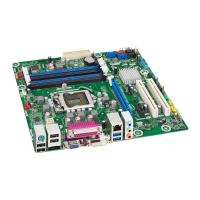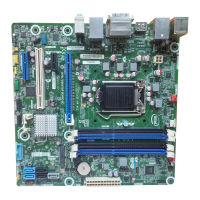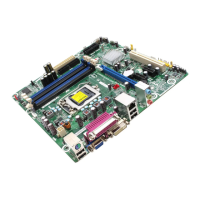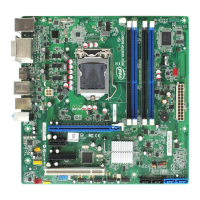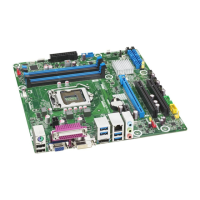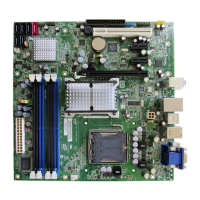Regulatory Compliance and Battery Disposal Information
105
5.1.5 EMC Regulations
Intel Desktop Board DQ77KB complies with the EMC regulations stated in Table 61
when correctly installed in a compatible host system.
Table 61. EMC Regulations
Regulation Title
FCC 47 CFR Part 15,
Subpart B
Title 47 of the Code of Federal Regulations, Part 15, Subpart B, Radio
Frequency Devices. (USA)
ICES-003 Interference-Causing Equipment Standard, Digital Apparatus. (Canada)
EN55022
Limits and methods of measurement of Radio Interference Characteristics
of Information Technology Equipment. (European Union)
EN55024
Information Technology Equipment – Immunity Characteristics Limits and
methods of measurement. (European Union)
EN55022
Australian Communications Authority, Standard for Electromagnetic
Compatibility. (Australia and New Zealand)
CISPR 22
Limits and methods of measurement of Radio Disturbance Characteristics of
Information Technology Equipment. (International)
CISPR 24
Information Technology Equipment – Immunity Characteristics – Limits and
Methods of Measurement. (International)
VCCI V-3, V-4
Voluntary Control for Interference by Information Technology Equipment.
(Japan)
KN-22, KN-24
Korean Communications Commission – Framework Act on
Telecommunications and Radio Waves Act (South Korea)
CNS 13438 Bureau of Standards, Metrology, and Inspection (Taiwan)
FCC Declaration of Conformity
This device complies with Part 15 of the FCC Rules. Operation is subject to the
following two conditions: (1) this device may not cause harmful interference, and (2)
this device must accept any interference received, including interference that may
cause undesired operation.
For questions related to the EMC performance of this product, contact:
Intel Corporation, 5200 N.E. Elam Young Parkway, Hillsboro, OR 97124
1-800-628-8686
This equipment has been tested and found to comply with the limits for a Class B
digital device, pursuant to Part 15 of the FCC Rules. These limits are designed to
provide reasonable protection against harmful interference in a residential installation.
This equipment generates, uses, and can radiate radio frequency energy and, if not
installed and used in accordance with the instructions, may cause harmful interference
to radio communications. However, there is no guarantee that interference will not
occur in a particular installation. If this equipment does cause harmful interference to
radio or television reception, which can be determined by turning the equipment off
and on, the user is encouraged to try to correct the interference by one or more of the
following measures:
• Reorient or relocate the receiving antenna.
• Increase the separation between the equipment and the receiver.
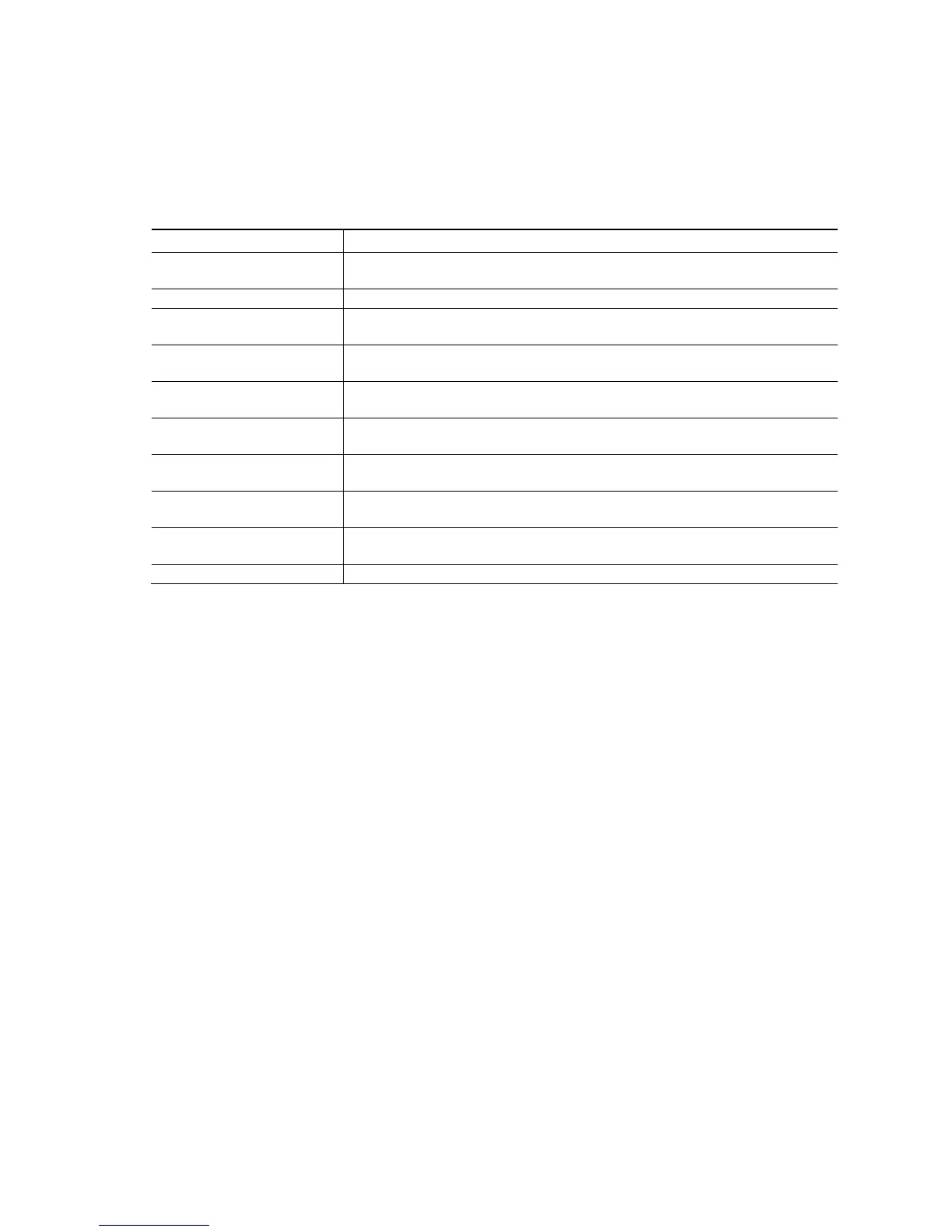